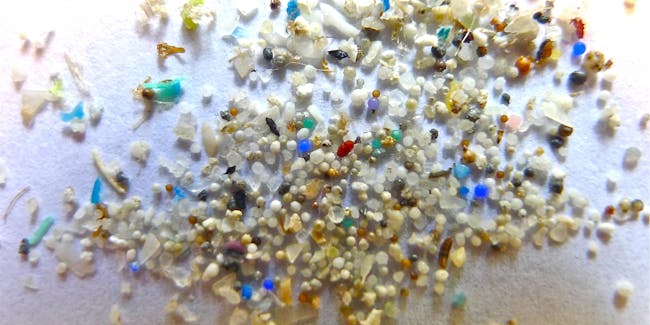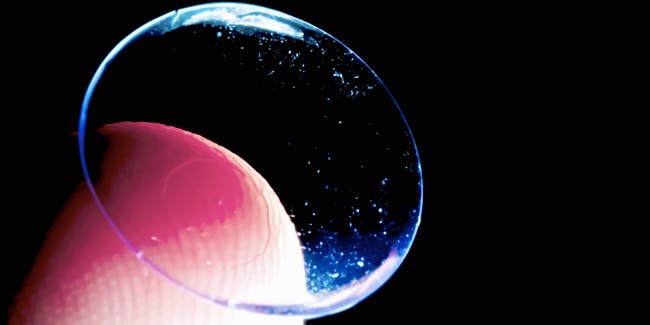All those tiny discs add up.
Every day, 45 million Americans stuff slivers of flexible plastic into their eyes, hoping to look less like nerds. While contacts-wearers become quite adept at poking them into place, a new study from researchers from Arizona State University suggests users are not very good at dealing with lenses once they’re done with them. All those tiny discarded plastic discs, they report, are adding up to a big environmental problem.
According to the findings, presented Sunday at the 256th National Meeting & Exposition of the American Chemical Society, anywhere from six to 10 metric tons of plastic lenses end up in United States wastewater annually. Because of the way wastewater is treated, all that plastic ends up contributing to microplastic pollution currently building up in waterways, which eventually makes its way into the food chain. It’s an especially timely problem as the use of contact lenses is steadily rising.
“This began as an exploratory venture but we have information to support the fragmentation of contact lenses into microplastics within a wastewater treatment plant,” study co-author and Arizona State University graduate student Charles Rolsky tells Inverse.

The second and third stage of the study showed that contact lenses — which are made of soft plastics like poly(methylmethacrylate), silicones, and fluoropolymers — become weakened when they’re mixed together with microbes in the wastewater. When these plastics lose their structural strength, they break down into smaller and smaller pieces, eventually becoming microplastics, which can’t be filtered out like other larger plastics.
Unable to be filtered out, these tiny plastics can make their way back out into nature. Rolksy and his colleagues point out that, because the microplastics derived from the contact lenses are denser than water, they can sink to the bottom of aquatic zones and become gobbled up by bottom feeders.

Of course, Rolsky doesn’t think anyone should stop wearing contacts altogether. He just thinks we need to to be more careful about how we dispose of them.
“Contact lens users should not feel ashamed to use contacts, as they are of high value and very effective,” says Rolsky. “But used contacts should be disposed of in the trash can instead of down any drain.”
Some contact recycling programs do exist — Rolsky and team are impressed by them — but until those become more widespread, the researchers suggest that “contact lens manufacturers should have a label on the box which suggests the best disposal strategy for used lenses, which should be with solid waste in the trash.”









